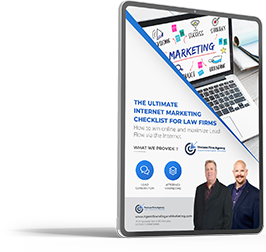In today’s highly competitive insurance market, establishing a strong brand identity is no longer just an option—it’s essential. With countless agencies vying for attention, a memorable and unique brand can set your business apart and foster lasting relationships with clients.
A well-crafted brand does more than just create recognition; it communicates your agency’s values, builds trust, and makes you the go-to choice for clients when they need coverage. But how do you create a brand that resonates, stands out from competitors, and leads to long-term success?
This article will guide you through actionable strategies to build a robust brand identity for your insurance agency, covering everything from defining your mission to ensuring brand consistency across all channels.
Key Takeaways:
- Brand Identity is Essential for Differentiation: In a competitive insurance market, a strong and unique brand identity helps your agency stand out, build trust, and foster lasting client relationships.
- Core Elements of a Strong Brand: A successful brand identity is built on key elements such as a clear mission and values, understanding your target audience, creating a cohesive visual identity, establishing a consistent brand voice, and defining a unique selling proposition (USP).
- Consistency is Crucial: Maintaining consistent messaging, visuals, and tone across all platforms—website, social media, and client interactions—reinforces your agency’s professionalism and reliability.
- Leverage Testimonials and Community Involvement: Positive reviews and active participation in the local community help build credibility and enhance your brand’s trustworthiness.
- Evolve and Adapt: Brand identity is not static; it should evolve with market trends, client expectations, and feedback to stay relevant and competitive in the changing insurance landscape.
By focusing on these strategies, insurance agencies can develop a memorable brand that resonates with clients and supports long-term business growth.
Understanding Brand Identity for Insurance Agencies
Brand identity refers to how your business is perceived by others. It includes visual elements like logos and color schemes, as well as tone, messaging, and core values. It’s not just about aesthetics—your brand identity is the emotional and psychological connection clients and prospects form when they think of your agency.
In the insurance industry, brand identity is crucial because it helps build trust in a field where consumers often feel uncertain or skeptical. A strong, clear brand identity not only makes your agency memorable but also reassures clients that they are in capable hands.
Why Is Brand Identity Important?
- Differentiation: The insurance market is crowded, with both large corporations and independent agencies competing for the same clients. A distinctive brand helps your agency stand out.
- Client Retention: A memorable brand makes it easier for clients to remember your agency and trust you with their ongoing insurance needs.
- Credibility: Consistent, clear messaging builds credibility and fosters trust, making clients feel they’re working with a reliable, professional agency.
Key Elements of a Strong Brand Identity
Building a strong brand identity requires understanding and leveraging several key elements that work together to create a cohesive image. These elements ensure your brand resonates with clients and leaves a lasting impression.
1. Mission and Values
Your mission and core values form the foundation of your brand identity. These are the principles that define what your agency stands for and what it aims to deliver to clients.
For example, your mission might focus on providing personalized insurance solutions for families and small businesses. Your values might include integrity, client-focused service, and a commitment to innovation.
Clearly defined values and a strong mission not only give your agency direction but also help potential clients identify with your brand.
2. Target Audience
Knowing your target audience is crucial for shaping your brand identity. Different demographics respond to different messaging and branding styles, so understanding whether you’re targeting seniors, young families, or small businesses will guide your approach.
For instance, if your primary audience is seniors, your branding should focus on trust, security, and a more traditional approach. If you’re aiming to attract young families, your tone can be more modern and dynamic, emphasizing affordability and protection for growing families.
3. Visual Identity
Your visual identity includes your logo, color palette, and overall design style. This is often the first thing a client will notice, so it’s essential to get it right.
- Logo: Your logo should be simple, memorable, and reflective of your agency’s personality and values.
- Colors: Color psychology plays a significant role in branding. In the insurance industry, blue is often used to evoke trust and reliability, while green suggests growth and safety.
- Typography: The fonts you choose should be clear, professional, and in harmony with the tone of your agency—whether that’s formal or friendly.
4. Brand Voice
Your brand voice is the tone and style of your communication. Whether it’s professional and authoritative or friendly and conversational, consistency in tone is crucial. This voice should be present across all platforms, including your website, social media, and advertisements.
For example, if your brand aims to be approachable and customer-friendly, your language should be clear, jargon-free, and relatable. A consistent tone makes your agency more trustworthy and easier to connect with.
5. Unique Selling Proposition (USP)
Your Unique Selling Proposition (USP) is what sets your agency apart from the competition. It could be a focus on exceptional customer service, deep expertise in a specific type of insurance, or strong community ties.
For instance, if your agency specializes in helping small businesses secure tailored insurance coverage, this becomes a cornerstone of your brand identity. Your messaging should consistently reinforce your expertise and highlight this unique advantage.
Strategies for Building a Unique and Memorable Brand
Once you understand the key elements of brand identity, it’s time to put them into practice with actionable strategies.
1. Research and Competitive Analysis
Before developing your brand, it’s essential to know what your competitors are doing. By conducting market research and analyzing competitors, you can identify opportunities for differentiation. Look for areas where your agency can offer something unique or do something better.
- SWOT Analysis: Conduct a SWOT analysis (Strengths, Weaknesses, Opportunities, Threats) to gain insights into your agency’s positioning. This analysis will help you understand where your agency excels and identify gaps in the market that your branding can address.
2. Developing a Brand Story
Storytelling is one of the most powerful tools in branding. A compelling brand story humanizes your agency, making it more relatable and memorable.
- Why It Matters: People connect emotionally with stories. Sharing the history of your agency, the challenges you’ve overcome, or the positive impact you’ve had on the community can build deeper connections with clients.
- How to Craft Your Story: To create a meaningful brand story, answer key questions such as:
- Why was your agency founded?
- What values drive your business?
- How have you helped clients solve their insurance challenges?
Your story should reflect your mission, values, and USP. If your agency was founded to serve underserved communities, for example, that narrative should be a key part of your brand identity.
3. Consistency Across All Channels
Brand consistency ensures that your visual identity, messaging, and tone are uniform across every client touchpoint. Whether it’s your website, social media, or printed materials, everything should align with your brand’s personality and values.
- Website: Your website is the centerpiece of your branding efforts. It should reflect your visual identity and clearly communicate your mission and USP.
- Social Media: Use social media to reinforce your brand voice and share content that resonates with your audience, whether through educational posts, client success stories, or community involvement.
- Client Interactions: Every client interaction—whether it’s a phone call, email, or an in-person meeting—should align with your brand. Consistent communication reinforces trust and reliability.
4. Leveraging Testimonials and Reviews
Client testimonials and reviews can significantly boost your credibility and reinforce your brand’s identity. Positive reviews from satisfied clients act as social proof, showcasing your strengths and reliability.
- How to Collect Reviews: Encourage happy clients to leave reviews on Google My Business or Yelp. Display these testimonials on your website and in marketing materials to build credibility.
5. Community Involvement and Corporate Social Responsibility (CSR)
Consumers, particularly younger generations, increasingly support businesses that demonstrate social responsibility. Participating in community events, sponsoring local activities, or supporting charitable causes that align with your agency’s values can significantly enhance your brand identity.
- Local Engagement: Consider sponsoring local sports teams, hosting educational workshops, or participating in charity events. Being active and visible in the community strengthens your brand and builds loyalty among local clients.
Common Branding Mistakes to Avoid
Building a strong brand identity requires careful attention to detail. Here are some common mistakes to avoid:
1. Lack of Clarity in Messaging
Unclear or inconsistent messaging can confuse potential clients. Ensure that your mission, values, and USP are easy to understand and clearly communicated.
2. Ignoring the Target Audience
Trying to appeal to everyone weakens your brand. Focus on a specific audience and tailor your messaging to their needs and concerns.
3. Inconsistent Branding Across Platforms
Inconsistent visuals or messaging across different platforms can undermine trust. Ensure your branding is cohesive across all channels, from your website to social media.
4. Not Adapting to Market Changes
The insurance industry is constantly evolving. Stay current by regularly updating your brand identity to reflect changing client expectations, regulations, and industry trends.
Measuring and Evolving Your Brand Identity
A strong brand identity isn’t static—it evolves over time. Here’s how to measure your brand’s effectiveness and make adjustments as needed.
- Tracking Brand Awareness: Use tools like Google Analytics, social media insights, and client surveys to gauge how well your brand resonates with your target audience.
- Adapting to Feedback: Be open to feedback from clients and employees. Use this input to refine your messaging, adjust your visuals, or enhance your services.
- Staying Relevant: Keep your brand fresh and relevant by staying informed on market trends and client preferences. Regularly update your branding, website, and messaging to maintain a competitive edge.
Conclusion
Building a strong brand identity is a long-term investment, but it’s one of the most important actions you can take to ensure your agency’s growth and success. From defining your mission and values to ensuring consistency across all channels, each step in the branding process helps your agency stand out in a competitive market.
By implementing these strategies, you’ll create a brand that resonates with clients, builds trust, and positions your insurance agency for lasting success.
Ready to Strengthen Your Insurance Agency’s Brand?
Building a powerful brand identity is key to standing out in the competitive insurance market. If you’re ready to elevate your agency’s image, attract more clients, and foster trust, start implementing these strategies today. Whether it’s refining your brand voice, improving your visual identity, or crafting a compelling brand story, every step you take brings you closer to long-term success.
Need help? Let ABM’s expert team guide you through the process. Contact us today to learn how we can help you develop a memorable, impactful brand that drives growth for your agency!
Frequently Asked Questions:
What is brand identity, and why is it important for insurance agencies?
Brand identity refers to the combination of visual elements, messaging, values, and the overall perception that clients and prospects associate with your agency. It’s important because a strong brand identity sets your agency apart from competitors, builds trust with clients, and reinforces your agency’s professionalism and reliability.
What are the key elements of a strong brand identity for an insurance agency?
The key elements include a clear mission and values, understanding your target audience, a cohesive visual identity (logo, colors, typography), a consistent brand voice, and a unique selling proposition (USP) that differentiates your agency from others.
How do I develop a unique brand story for my agency?
Start by defining your agency’s origins, mission, and values. Think about why the agency was founded, the challenges you’ve overcome, and the impact you’ve had on clients. A compelling brand story should reflect these aspects and connect emotionally with your audience.
Why is consistency important in branding?
Consistency across all platforms—website, social media, print materials, and client interactions—builds trust and reinforces your brand’s professionalism. Inconsistent branding can confuse clients and weaken your agency’s credibility.
How can I differentiate my agency from competitors?
Focus on your Unique Selling Proposition (USP), which could be personalized service, expertise in a specific type of insurance, or strong local community involvement. Highlight what makes your agency different and communicate that consistently in your messaging.
How can I use client reviews to strengthen my brand?
Positive client reviews act as social proof that builds trust and credibility. Encourage satisfied clients to leave reviews on platforms like Google My Business or Yelp, and feature these reviews on your website and marketing materials.
What are some common branding mistakes to avoid?
Avoid unclear or inconsistent messaging, trying to appeal to everyone, using inconsistent visuals across platforms, and failing to evolve your brand as market trends and client expectations change.
How do I measure the effectiveness of my brand identity?
Track brand awareness using tools like Google Analytics, social media insights, and client surveys. Monitor feedback from clients and employees, and be open to making adjustments to your visuals, messaging, or services based on this input.
How often should I update my brand identity?
Your brand should evolve as the market, client expectations, and industry trends change. While your core values and mission may remain consistent, regularly assess and update your visual identity, messaging, and online presence to stay relevant.
How does community involvement improve my agency’s brand?
Participating in local events, supporting charitable causes, and engaging with the community demonstrate social responsibility and enhance your agency’s reputation. It builds loyalty among local clients and positions your agency as a trusted, community-focused business.
This article is a collaboration between Carl Willis and OpenAI’s ChatGPT. Created on September 24, 2024, it combines AI-generated draft material with Willis’s expert revision and oversight, ensuring accuracy and relevance while addressing any AI limitations.






